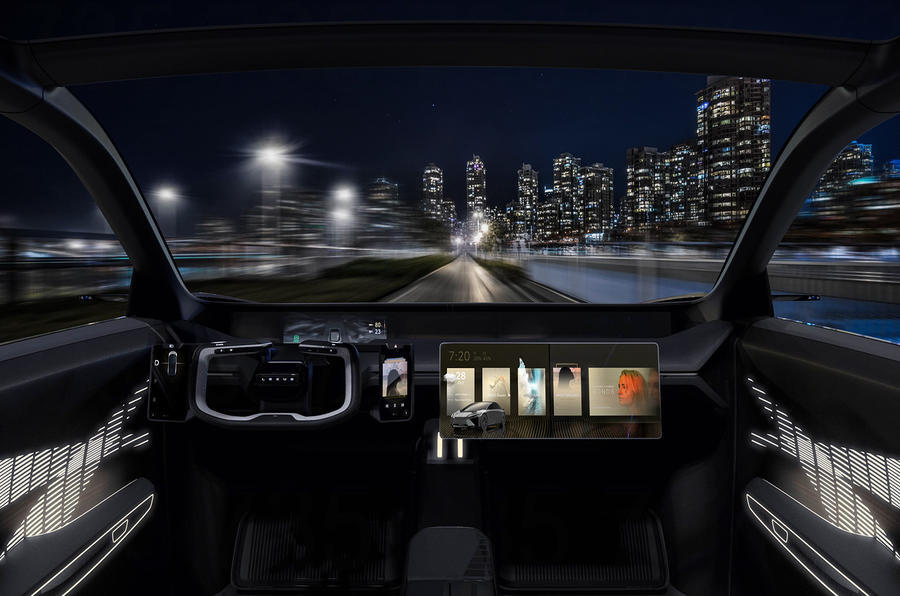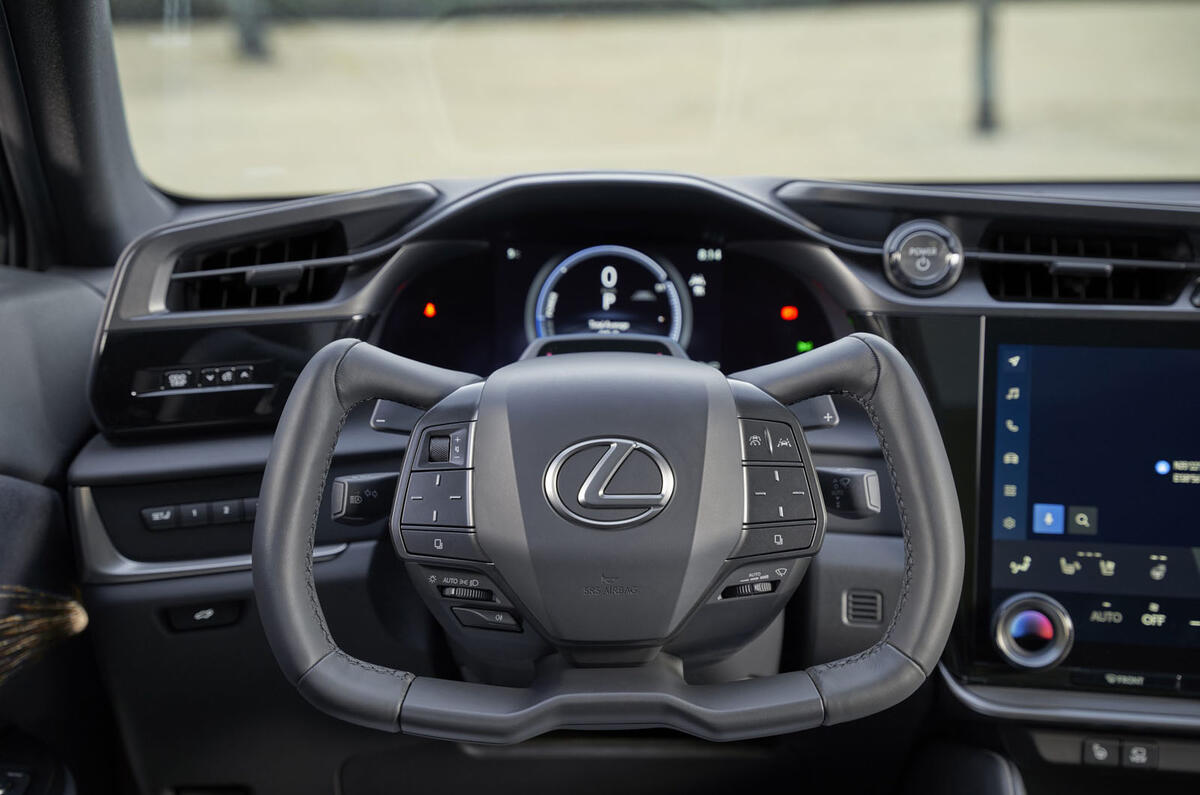Toyota is on track to put its steer-by-wire technology into production by the end of 2024 after making a significant upgrade to the system.
The key change to the steer-by-wire system, which means there is no mechanical link between the steering wheel and the wheels, is a new 200deg ratio instead of a 150deg ratio before to give the steering a smoother and more natural feel.
Toyota engineers working on the system, which is also known as One Motion Grip, said the new ratio gave the system an “easier, more familiar feel” for customers. The Japanese company has had “hundreds” of people from inside and outside the company test the system to ensure it is as intuitive as possible to drive.
Steer-by-wire is initially set to be offered on Toyota electric cars, including the Toyota bZ4X and the Lexus RZ. The technology has been developed to meet the world’s strictest legislation around by-wire steering systems, which had been Europe but has recently been surpassed by China.
Europe has created its own certification programme for by-wire steering systems, removing the need for a mechanical link between the steering wheel and the wheels as had previously been law. The system is already legal in Japan, while in the US, no such legislation exists. The UK would most likely follow the EU legislation, but this is not yet known.

Over-the-air software updates would be possible for the steering system. However, such remote updates are not currently allowed by legislation.
Engineers confirmed that the steer-by-wire system is also earmarked for the new modular architecture that will underpin Toyota and Lexus electric cars from 2026, starting with a new Lexus saloon inspired by the LF-ZC concept at the Japan Mobility Show.
Lexus design chief Simon Humphries said the adoption of steer-by-wire opened up huge possibilities for interior design. “We want the interior to be as open as possible,” he said. “You can get rid of the ‘bits and pieces’ and interior panels don’t have to cover anything. Go steer-by-wire and there are fewer mechanical bits to hide. It gives more and more freedom."
Toyota is also undergoing a further development of the steer-by-wire system called Neo Steer, which moves the accelerator and brake controls onto the steering wheel. This is the early stages of development, with no production date set, and the idea behind it is to provide 'mobility for all' for drivers who cannot use foot controls.
Driving the new One Motion Grip system
@autocar_official Lexus RZ prototypes will soon feature a steer-by-wire system – we got to test it out in Denmark #autocar #lexus #lexusrz #electriccars #newcars ♬ original sound - Autocar
A previous drive of a One Motion Grip system on a Lexus RZ left me impressed with the technology but hesitant as to whether it had a future because it was so far removed from steering as we know it today. It was too quick, too urgent and often left you having to apply lock on multiple occasions in the same corner - either adding more or taking it off.
This was with the old 150deg ratio but the new 200deg ratio makes it a lot easier and more intuitive to drive and you can at last see a way to production, where it can benefit the way people steer rather than have to relearn and compensate for something overly hyperactive.
The new ratio makes the steering feel less nervous and urgent while also keep its low-speed manoeuvrability. It’s all very natural and you quickly learn to place the car with precision and ease. It's much easier to reverse the car now than with the old ratio too, the system responding as you'd expect to small inputs.
We also got to try the Neo Steer system, which uses a paddle behind the wheel to brake with your left hand and an actuator for your right thumb to accelerate. This is far less mature and harder to drive anyway, with a much quicker 90deg steer-by-wire ratio. The accelerator and particularly the brake controls were not linear either and it's easy to get in a muddle.
The sentiment behind the system is fantastic and Toyota will soon hand a prototype over to a Japanese Paralympic athlete it works with for some real-world testing to further develop the system.








Join the debate
Add your comment
Would make sense to have some sort of contingency power supply (e.g. capacitor) in the event of complete electrial failure. Car knows where it is, what's around it. Could use remaining power to steer itself to a safe stop somewhere.
Some misconceptions, its NOT cheaper or smaller, to be compliant it has to have multiple systems and even has its own in-built backup battery system to keep it working even in the event of catastrophic electrical failure in the vehicle itself.Yes current systems have electrical assistance but the driver is deliberately left stronger leverage than the power assist motor so even if the electrics fail and try to hard turn the wheel one way, the driver can overpower it and maintain control.Yes a mechanical linkage could fail, but incredibly rare.Who can say the same of complex systems dependant on sensors and software? Its partly novelty, partly as Toyota say for being able to play with interiors more. Planes are fly by wire - yes but a plane won't hit something in the next 6 feet / 3 seconds if the steering fails, there is time to act.Would I go in a car with it? not a chance!
The shear fact you don't need a steering column with linkages going though the bulk head and all the complex changes needed to go from left to righthand drives makes it this system smaller and lighter, just see how long you can hold a 3 foot steel column above your head for.